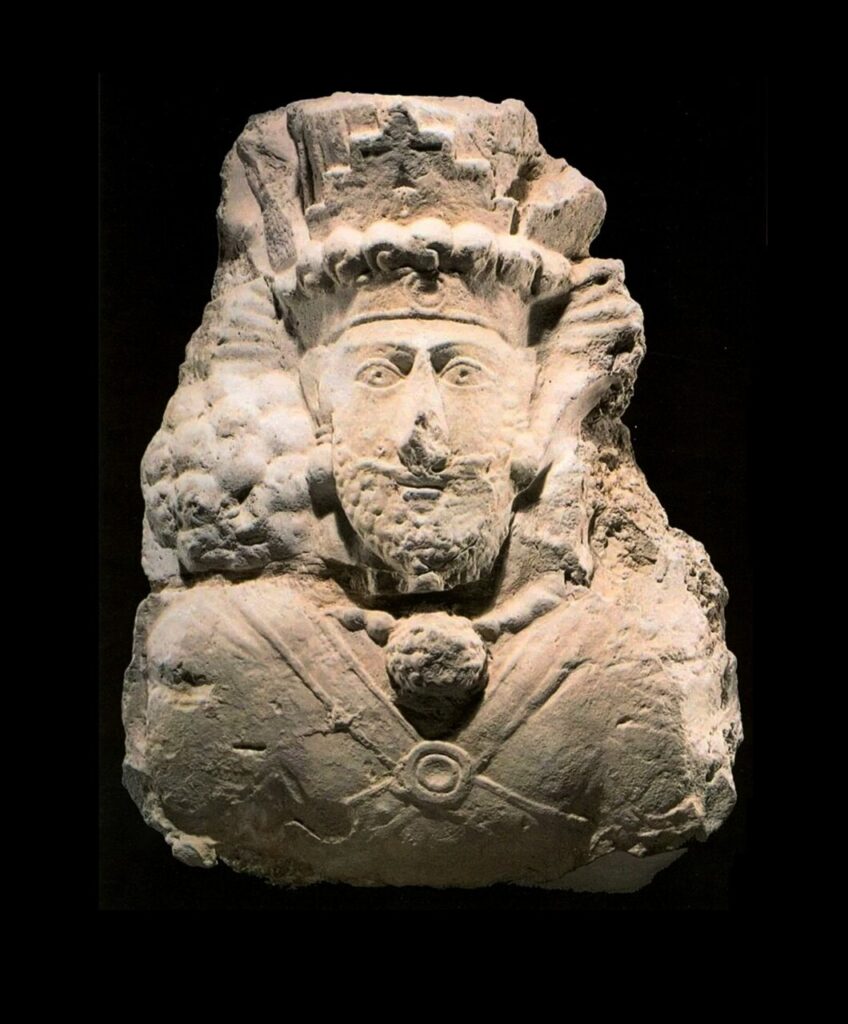This 50cm plaster bust depicts Shapur II of the Sassanian dynasty. It was retrieved during excavation at Hajabad Manor Complex near Dalabh in Fars province, southern Iran. ”
The site was discovered in 1977, but was heavily damaged by local farmers using bulldozers, but was investigated in 1978 by the late Massoud Azarnoush and followed-up campaigns were conducted in 1998 and 1999.
Azarnoush identified the complex as a modern Sasanian-era residence along with the reign of Shapur II (307–379 CE). Its unique layout includes different sections such as ritual spaces, religious dormitories, living areas, guest accommodations, and unidentified departments. There are distinctive elements of the Sasanian (Ayvans, Courtyards, Domes), but spatial organization is fundamentally different from monuments from other known eras.
A wealth of stucco decoration (both dolls and geometric) and painted murals provide important evidence of Sasanian dating: murals concentrate on ritual sections, while stucco work (only figures/geometry) appears only in religious areas. Her dedication to the cult, multiple stucco busts depict the royal figures that Azarnouch proposed to the owner of the building.
Among these, one distinctive bust is convincingly identified as Shapur II. This fragmented yet skillfully crafted bust (which could have been mounted on a wall) exemplifies the innovations in the sculptures of the Central Sasanian, allowing for face recognition beyond coins and reliefs. The ritual and religious zones show exceptional decorative investments and confirm their status as an architectural focus. Shapur II (309–379 CE), Shapur The Great, and Tenth Sasanian Shahanshah. His rule catalyzed military revival and territorial expansion, beginning the first Sasanian golden age, solidifying his legacy among the empire’s most illustrious monarchs.
Registered in 2015 with National Heritage No. 25, the bust remains an icon of the royal portrait of Sasania despite the site’s initial disturbance.
morning

